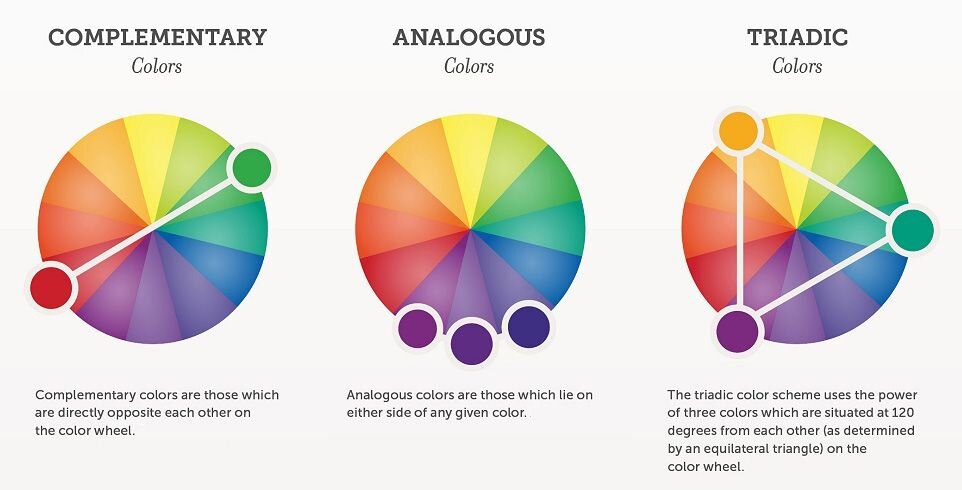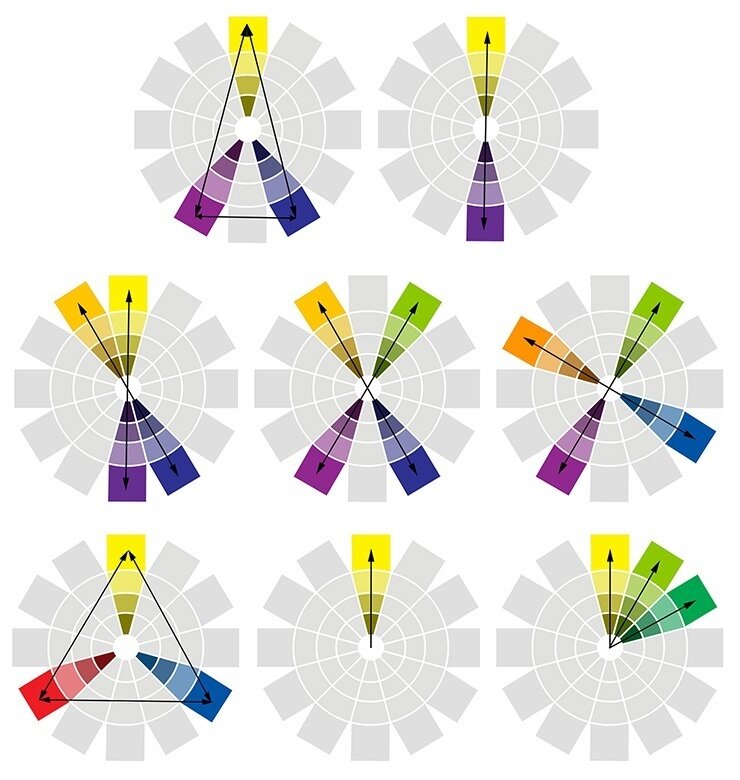Color Theory: Munsell System
HOW WE SELECT COLOR
In a future Sketchbook post, we’ll be discussing how we select colors, and how pigment formula is a crucial component to a color’s success. Rather than start with paint manufacturer’s swatch systems, however, we thought it would be interesting to discuss where these swatch systems originated, and conceptually, how they all fundamentally work. They’re all based on the groundbreaking Musell Color System.
THE BASIC COLOR WHEEL: HUE
We’re all familiar with the fundamentals of primary, secondary, and tertiary colors, and the notion of complimentary colors, As far back as the 17th century, Sir Isaac Newton (!) devised a color wheel based on musical intervals. The poet Goethe developed a Theory of Color based on human perceptions of color (below left), and further developments produced the equally-space hue intervals we’re familiar with today (right). Complimentary, analogous, and triadic relationships (below) can be rotated around the wheel within different hue ranges.
COLOR WHEEL: MORE GEOMETRIC RELATIONSHIPS
By rotating different geometric shapes around the wheel, different hue harmonies can be achieved creating dozens of color combinations. Paint companies often times use these relationships produce families and combinations to help make the color selection process somewhat easier.
FIRST COMPREHENSIVE COLOR SYSTEM
In the early part of the 20th Century, artist Albert Henry Munsell developed a comprehensive system quantifiably describing color using three properties: Hue (the color name), Value (its lightness or darkness), and Chroma (its purity—or difference from neutral gray), organized into a three-dimensional model (the Tree). The complete system is comprised of the Atlas of the Munsell Color System (color charts and diagrams) and A Color Notation, the theoretical system that describes the psychological affects of color.
ORIENTATION
Visualizing the Tree, black and white run vertically through the center of the tree (white at the top), creating levels of grey, and pure color hues (full chroma) are at the outer edge of each main branch. Chroma variation is achieved by adding each hue’s complimentary color (in horizontal steps towards or away from neutral gray). Value (lightness) is achieved by moving up or down each vertical level of grey (adding white or black). The charts below illustrate various vertical and horizontal sections through the tree, and a physical model of the system can be found below, bottom.
BASIS OF SYSTEM STILL IN USE TODAY
The Pantone Matching System (or PMS System) is a standardized color reproduction system used by design professionals that is largely based on the Munsell System. You might have seen it as a color-swatch option in Adobe Photoshop, Illustrator, or In-Design. Pantone specifically offers a Munsell Color Order System that is utilized in industries as diverse as design and production, geology, agriculture, and as other various government standards. For visualization purposes, they offer a three-dimensional Munsell Color Tree (below). Each branch of the tree is described in the vertical Munsell Charts (see gallery, above).





















